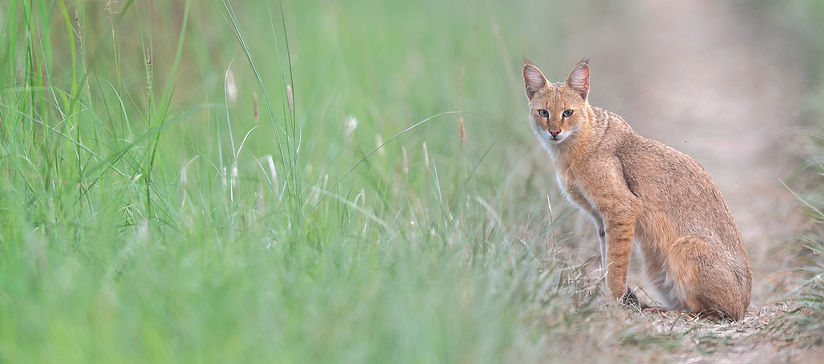ASTANA – The Kazakh Ministry of Ecology and Natural Resources has revealed plans to revise the national Red Book of rare and endangered species, updating which animals will remain under protection and which can be removed, Kazinform reported on May 27.

Jungle cat. Photo credit: catsg.org
The fifth edition of the Red Book in 2025 lists 217 animal species and subspecies, down from 227 in the previous edition two years ago. Due to the large number of species and the large territories in which they live, it is not possible to provide precise data on their numbers, the ministry noted.
Since 2005, the number of Tugai deer (Bactrian deer) has grown from 350 to 1,210 individuals, kulan from 1,112 to 4,614, and argali from 8,835 to 21,182. The goitered gazelle population has also increased.
The snow leopard population has risen more than 20% since 2019, now estimated at 152-189 individuals. Eleven snow leopards have been tagged with satellite collars as part of international conservation efforts.
Nineteen invertebrate species will be removed from the Red Book due to stable or non-threatened populations. These include two mollusks and 17 insects such as the emperor dragonfly, Dorcadion balchashense, and the longhorn beetle.
At the same time, it is proposed to add the griffon vulture, black vulture, and jungle cat to the list.
While endangered species are distributed across the country, a higher concentration is found in the mountains. The most effective comprehensive measure for the conservation of rare and endangered animal species is recognized by the world community as the creation of specially protected natural areas.
One of the successful examples of maintaining a comfortable life for wild animals was the kulan. Once nearly extinct in Kazakhstan, 14 individuals were reintroduced to Barsakelmes in 1960. The population has since flourished and expanded to Altyn Emel National Park, with a current count of 4,614 individuals.
Work is also underway to reintroduce the Turanian tiger and Przewalski’s horse (Kerkulan, Kertagy) to their historical habitats.


